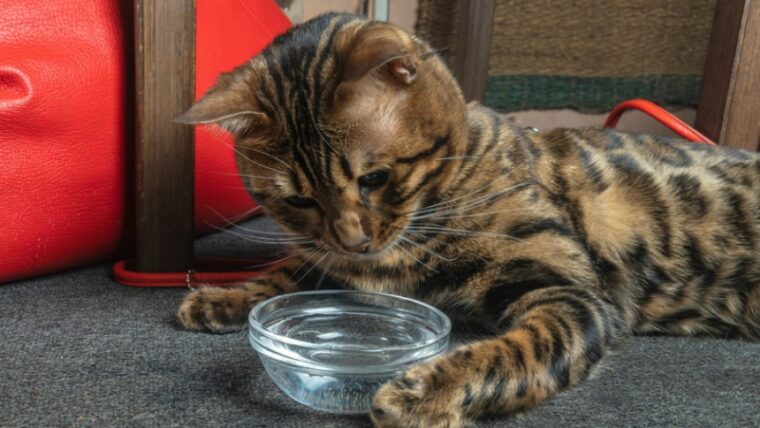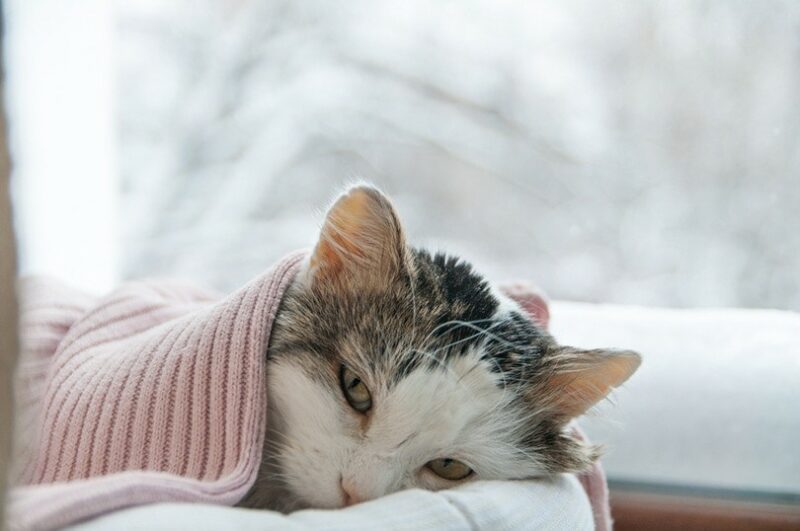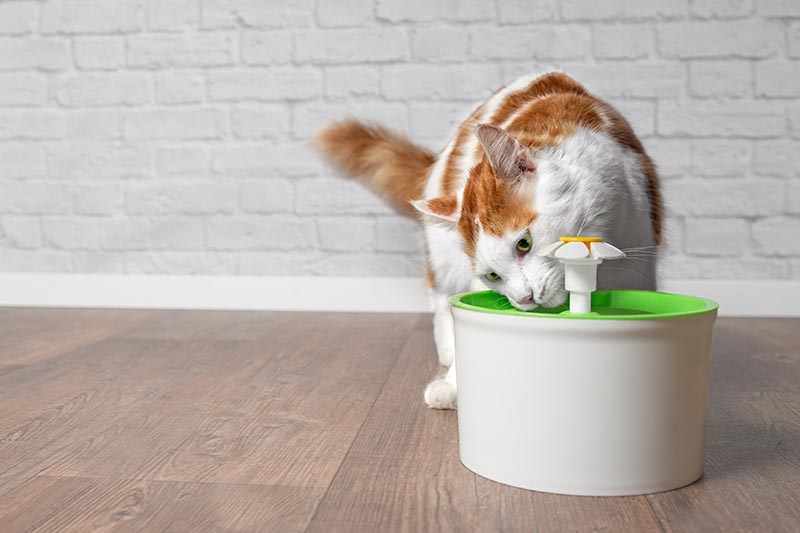
Click to Skip Ahead
Correct hydration levels in your cat are vital in maintaining their daily health and quality of life. Domestic cats, like their fellow wild felines, surprisingly don’t drink large amounts of water. They tend to take smaller sips throughout the day as opposed to gulping a bowl full. If, however, they are not drinking enough water, it can affect many bodily functions, such as kidney function, temperature regulation, food digestion, and joint mobility.
A lack of water intake (or excessive water loss) can cause dehydration. As their owner and the best judge of your cat, it is helpful to become familiar with your cat’s normal drinking habits, so you know if their pattern is off-kilter. During the day, a cat typically consumes an average of 4 ounces of water for every 5 pounds of body weight daily.
How Much Water Should My Cat Drink?
Cats don’t always drink from the bowl you provide at home. While there can be reasons for this, which are easily solved (see tips below), it can also mean they are drinking elsewhere, like outside from streams or a rain collection source.
The type of food they eat also affects the quantity of water they will drink. Canned meat contains around 70% moisture and, therefore, your cat will drink less if they are fed wet food. Dry food, in comparison, only contains around 10% moisture, and they will naturally drink more if on a dry diet, as kibble doesn’t provide as much water.
While climate, diet, activity, age, and general state of health all play roles in how much they need to and will drink during the day, a general idea of a standard amount is 4 ounces of water per 5 pounds of body weight per day. This equates to approximately, for an average 10-pound cat, 1 cup of water per day. To clarify or monitor your cat’s water intake, measure the amount of water you give them in the morning and then again in the evening.
Dehydration

Dehydration is caused by a lack of water intake or by increased loss of water. Medical conditions, such as vomiting, diarrhea, diabetes, kidney disease, hyperthyroidism, and injuries such as burns or even excessive panting will all cause a loss of water.
Dehydration may be slight at first, but if it’s left undetected or untreated, the signs and effects of dehydration increase and will cause coma and death in extreme cases. Sometimes owners may not notice the initial subtle signs of dehydration until they become severe, and this is another great reason to know and understand your cat’s normal drinking patterns.
How to Keep Them Hydrated

Conclusion
Drinking water is vital to life. Providing a constant, fresh, and clean supply of it is part of pet parenting, and if your cat isn’t drinking enough, it can be concerning. It is worth trying the above tips and tricks to help with this, but should it continue, have a chat with your veterinarian. If they are showing signs of dehydration and/or other signs of illness, have your veterinarian examine your cat, as any delay in assessment and treatment could have serious consequences.
Featured Image Credit: kalyanby, Shutterstock







